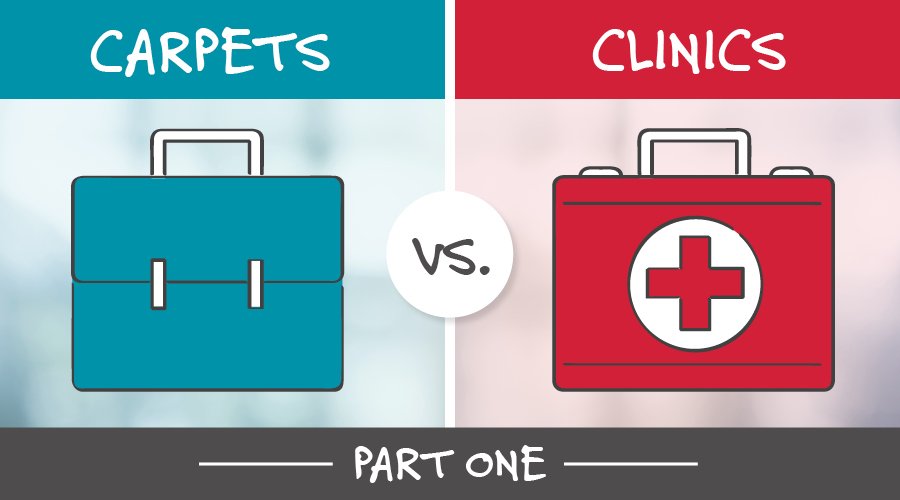
Sarah can’t close enough deals to meet her goals. A medical device salesperson with a history of exceeding her quota, she has plenty of pipeline, but most of her deals are now getting stuck.
Sarah says that new cross-functional buying committees are throwing up obstacles. She doesn’t like buying committees. She loves being in the clinic talking to doctors, and she dreads talking to procurement staff, or worse, hospital executives.
Sarah is a fictitious rep, but she reflects the experiences of many of today’s medical device sales representatives.
It’s not the seller; it’s the system
I recently went to a sales enablement conference where a senior training manager from a medical devices company talked about how her salespeople need to get better “selling in the carpeted areas of the hospital.” Like Sarah, her reps need to develop the ability to be active with buyers who have a business focus. That gap in competency is confirmed by consulting firm McKinsey & Company.
They found that only 16 percent of C-level executives are satisfied with the selling process with medical equipment sales companies. That stat bears restating: if you are in a medical equipment company, chances are that four out of five buying executives will be dissatisfied with your salespeople.
Most medical device sales reps have been trained to be effective in the clinic selling to healthcare practitioners. But buying decisions that doctors used to make are now the domain of cross-functional buying committees who evaluate solutions based on clinical effectiveness and business outcomes.
Medical equipment companies that can’t up-skill their sales reps for conversations with executives are at risk of losing out to more savvy competitors. Seismic changes in healthcare delivery point to this shift continuing for the foreseeable future.
3 Healthcare trends that will continue to drive the need to “sell on the carpet”
1. Centralized Procurement
The rapid rate of consolidation in the healthcare provider space has been driven by an array of factors, including improving access to capital, responding to regulatory burdens, and reaping the benefits of scale. Centralized purchasing is an essential post-merger strategy for reaching these goals.
According to The Advisory Board, 91 percent of executives view centralized procurement as critical to achieving their integration goals, and 98 percent have already centralized procurement or will do so in the future. While many procurement teams have medical staff who make decisions based on efficacy, those teams also include buyers who focus on operations and cost-cutting.
As sourcing decisions become more strategic, you can expect more involvement from executives. Salespeople who can’t elevate their conversations to the C-suite risk seeing their deals shrivel or disappear.
2. Value-Based Purchasing
Both government and private insurers are moving away from fee-for-service models. They now make more payments based on an entire episode of care with penalties and rewards based on quality and cost performance. For example, the US Department of Health and Human Services has targeted 50 percent of Medicare payments to be linked to alternative models by the end of 2018. The federal government’s Center for Medicare and Medicaid Services (CMS) has implemented the Hospital Value-Based Purchasing program where hospitals are evaluated and compensated based on safety, quality of care, efficiency, cost reduction, and patient experience.
These factors influence how providers buy. Simple, straightforward decisions based on clinical efficacy have evolved into complex cross-functional debates with multiple evaluation criteria. Salespeople need the competencies to communicate and Create Value in a way that speaks to all objectives.
3. Margin Pressure on Healthcare Providers
According to investor service Moody’s, hospital margins declined from 6.1 percent to 5.7 percent in 2016. Moody’s also predicted that “margins will come under more pressure in the coming years as providers spend more on salaries, pensions, and pharmaceuticals.”
Uncertainty about future payments combined with rising costs means that hospitals will look under every stone for ways to protect margins. Salespeople who have been taught to focus on the clinical effectiveness need help in responding to these pressures.
Salespeople who have spent their careers in the clinic face a steep learning curve in selling to buyers with a business focus. In the next post, we’ll talk about how you can up-skill your reps for this new buying environment.





